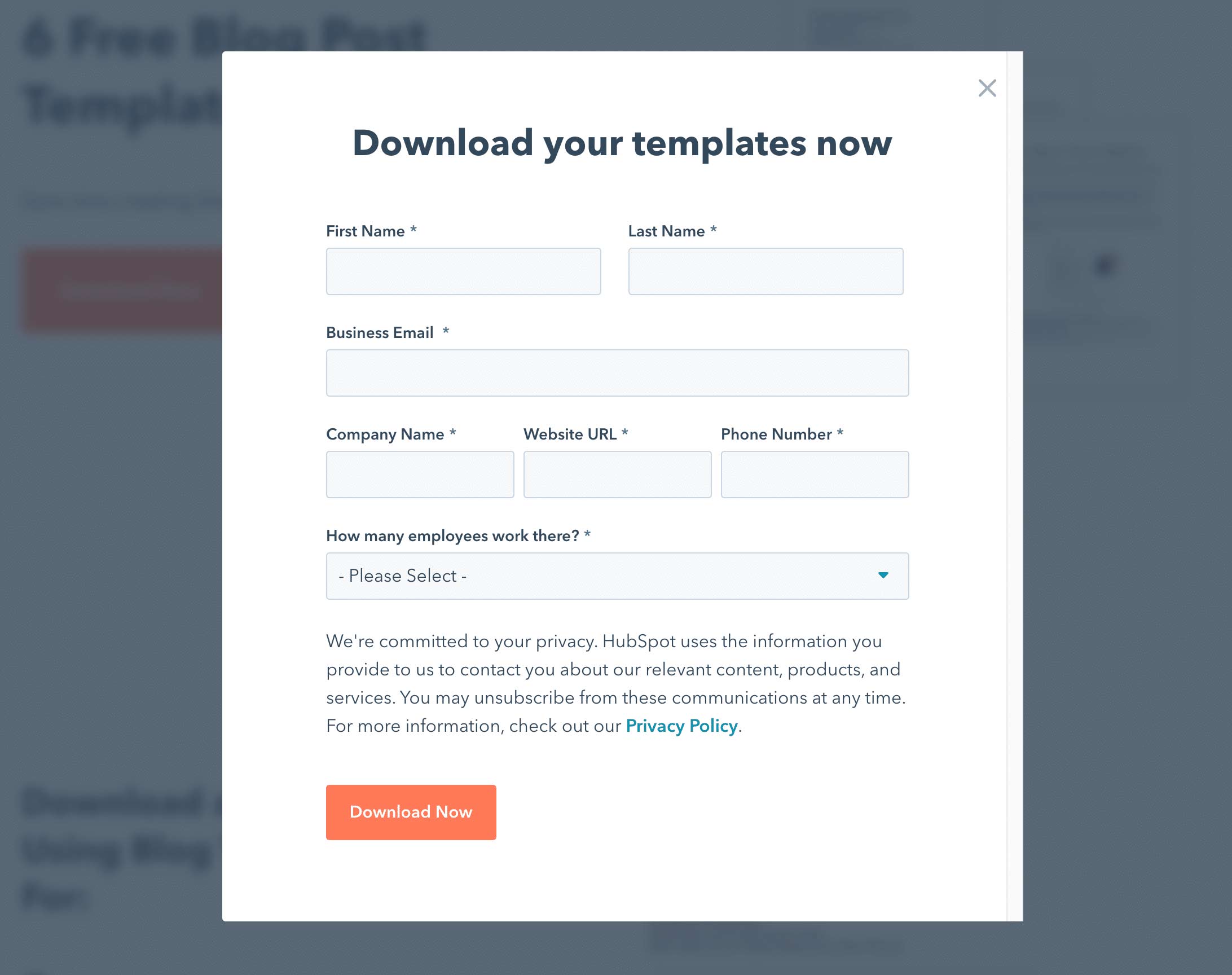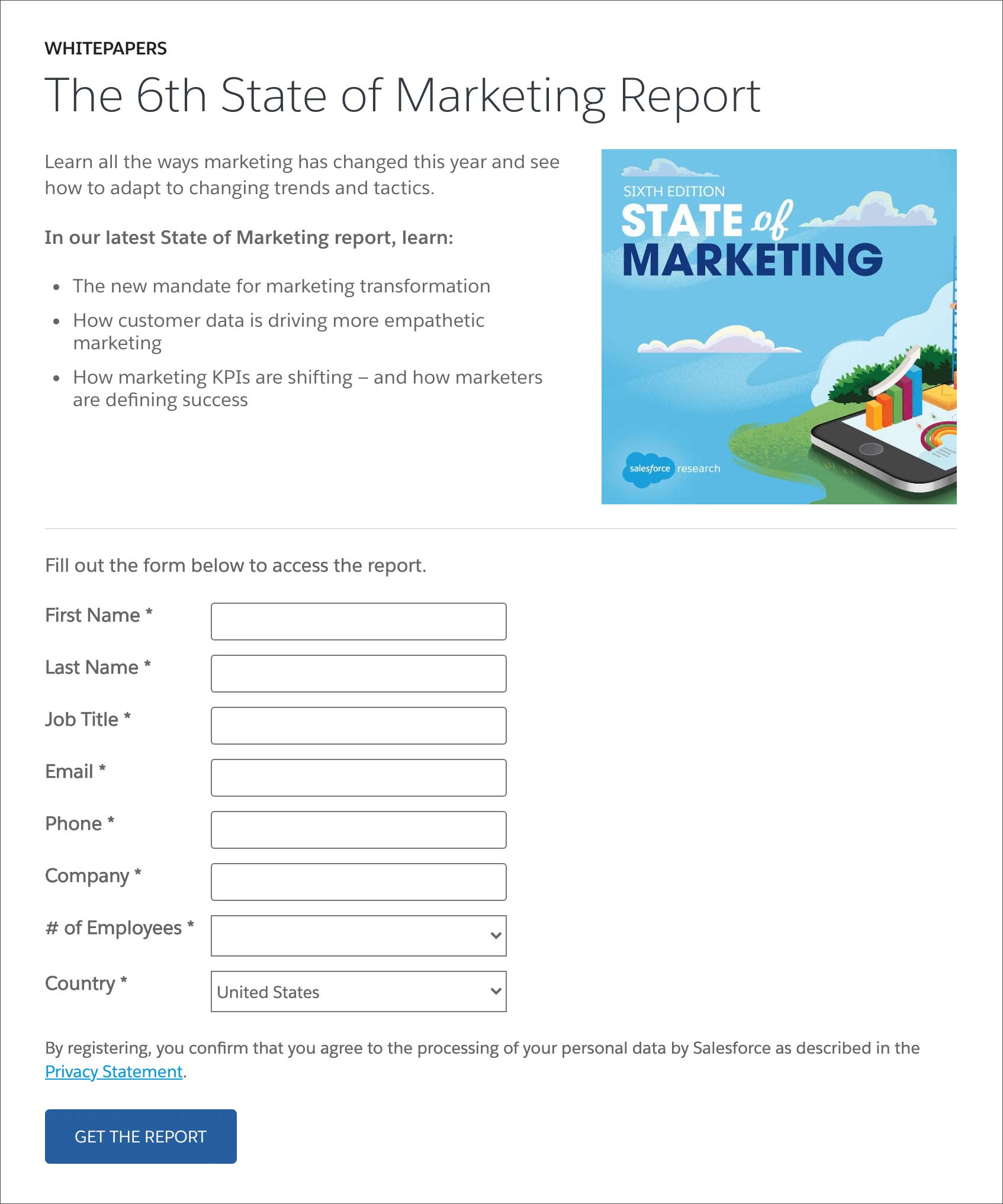
Rethinking Gated Content: Marketers New Dilemma
As a B2B, Startup, or SAAS marketer there is one truth. Always get someone’s email. It’s instinctual. And it makes sense. Email marketing is a powerful tool with great engagement.
Where do marketers turn to get those valuable email addresses? Gated content.
Gated content defined
Gated content is content requiring the visitor to complete a form. Gated content can be many things — white papers, research, infographics, videos, and more. The length of the form varies. The simplest form requires a name and email. More complex forms ask additional details such as job title, phone number, and other related information.
Gating content is common for B2B businesses to generate leads. Gated content requires a toll. To get the content you must pay with at least your email.


Types of gated content
Video
It takes time to produce good video. Gated videos tend to be tutorials and how-to content. Sometimes, with Software as a Service (SAAS) vendors the videos focus on in-depth look at features.
White paper
A white paper is a classic example of gated content. White papers are research-based, expertise led reports on a specific topic.
Ebook
Similar to a white paper. Interestingly, the name is a bit of a misnomer as an ebook is typically a shorter format than a white paper. The goal is the same. Build trust and authority with your audience.
Infographic
Infographics are usually highly designed facts and figured presented in an easy to digest visual medium. Where a research report full of numbers can be dry, an infographic takes those numbers and adds context through visuals.
Research
Research can take several forms — informal online polls to paid months long in-person interviews. The goal is to provide trends for a given topic within an industry.
Templates
A popular choice for gated content is to provide templates on how to track or perform a task. Often viewed as a starting point for someone to follow and complete on their own.
Slide shares
Slide shares are presented as a way to show authority about topic. Generally, they are taken from a presentation from a speaking engagement.
Does gated content work
Yes — sort of. Consider that 31% of B2B marketers rate their content marketing as very or extremely successful. Of those content marketers, 83% contribute their success to the value of content. That means the creation of more and more valuable content every day.
According to wordpress.com, users create 70 million new posts each month! On wordpress.com alone. That is big competition for attention.
To get gated content to work it has to meet a high threshold:
- Unique.
- Engaging.
- Provide immense, focused value.
- Reusable reference.
- Your best work.
Pros of gated content
- Generate a list of interested parties.
- Provides deeper insight into your audience’s interests through intent.
Cons of gated content
- Lower ability to use content for SEO.
- Less visibility of content.
- Potential for noise in email lists.
- Trust lost if content is subpar vs expectations.
Problems with gated content
The numbers are daunting. Expectations are high.
Consider yourself. How often have you provided your email and received meh content? How did that make you feel? How many of your newsletters go to junk?
Trust is a key driver to success. According to the ‘B2B Content Marketing Benchmarks Insights 2021 report’, 81% of business have a goal of building trust. Is the content we are asking users to exchange information for good enough to build trust?
Trust is a fragile thing — difficult to build, easy to break. It cannot be bargained for. Only if it is freely given it can be expected in return.”
— Peter Lerangis, The Sword Thief
The quote above uncovers the greatest risk of gated content. Losing trust. Content competition is serious. It isn’t limited to our immediate competitors. Content created by a SAAS company, podcasting tool, influencer, and many others are all our competition for attention. Gated content has to rise above it all.
Gated content evaluation
We may find it beneficial to gate content, even knowing the risks. We know the effort involved.
Research
Start with research. When the content you want to gate has high quality competition that is free; avoid it. Even a unique take on a visible topic isn’t going to be good for gated content.
Editorial review
Approach gated content like writing a book. Make sure you hit the mark. Gated content should go through a full editorial process. There can’t be spelling errors or incorrect facts.
More eyes
Get outside opinions. Is the content engaging? Is it helpful? Does it look and feel professional?
Harsh criticism
Be honest and direct. Be your own harshest critic. Is the creation something you would exchange your information for?
The data problem
The purpose of our gated content is to get information. Can we trust the data we do get?
Here’s an insider tip. I rarely use my real information, particularly email. Between services that mask your real email to temp emails, it isn’t necessary. Even if you only embed the content in the message, I still get it.
This leaves us with another dilemma. Can we trust the information we do get or is it noise? You could be getting paid for your content with untraceable counterfeit bills.
Remember trust. Trusted emails get delivered to the inbox. Others go to junk. If the list you have to send emails contains a lot of junk, there is a real risk to your delivery rates.
Consumer change
Gated content has been successful in the past. It was a fair deal. As more information becomes available, consumers change. The white paper that was extensive has become a blog post. Extensive research is now a pillar page. All toll free.

Gated content has to change with the consumer. There are expectations in an exchange. As marketers, we have to ensure that the consumer is getting a fair deal.
Gated content and the attention economy
For me, gating content sacrifices too much. At the top of this post, we saw how much content gets created. Content across every medium is competition for attention.
Gated content is not indexed for search. Sure, you can do a long tease that Google will search. Expectations are that I can consume an entire thought. It can be frustrating as a user to learn that you have to give up data for access.
There is so much quality content available. The consumer has the advantage. If we want their attention, we have to earn it. Earn their trust so that they consume more of the content we produce. Grab their attention and fight to keep it.
Final thoughts
Gating content leads your audience to find information elsewhere. Use your content as a way to engage your audience. As trust develops consumers will reach out. There is a need or problem they have to solve. Help instead of sell. Sell when you have trust.